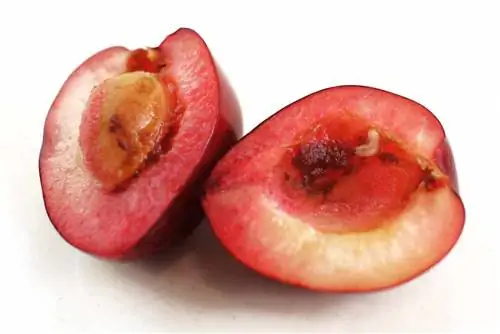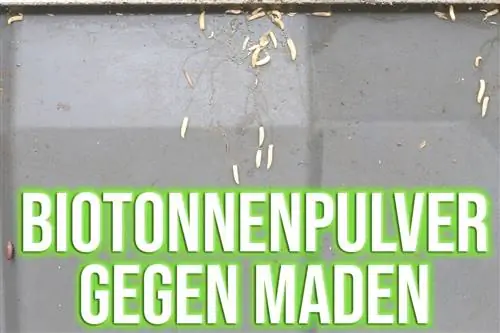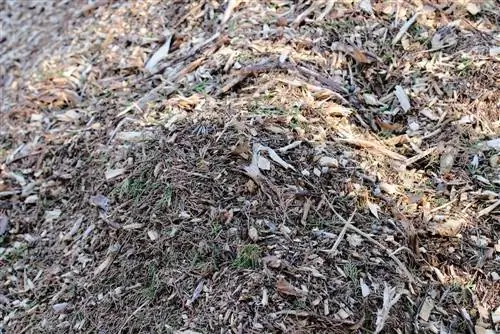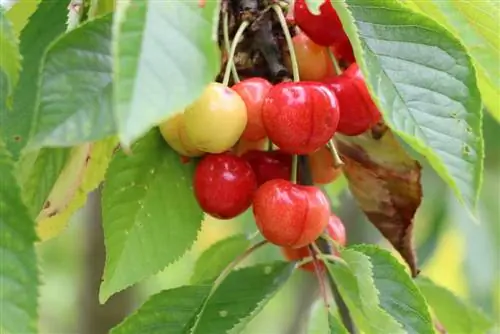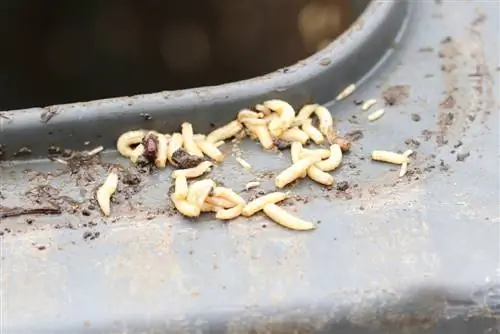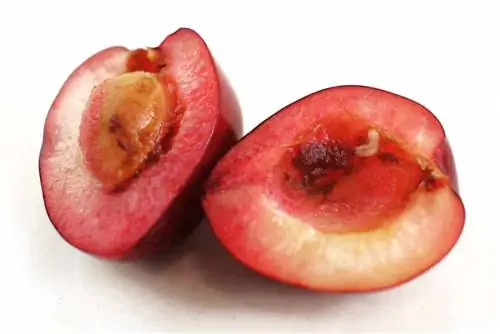- Author admin [email protected].
- Public 2023-12-17 03:39.
- Last modified 2025-01-24 12:45.
If there are worms in sweet cherries, they are often the offspring of the cherry fruit fly. It is the most important pest affecting sweet cherries. The pest is spreading more and more because the climatic conditions favor the development of the larva into an insect. It is therefore all the more important that you act quickly and take preventative measures in the event of an infestation.
Cherry fruit fly life cycle
The insects overwinter in the pupal stage in the soil and emerge the following year between May and June to mate. Females lay one egg on a ripening fruit that is currently turning yellow to yellowish-red. It takes about six to eight days for the maggot to hatch and burrow into the flesh. The worms live here for the next three weeks and feed on the cherries. The life cycle completes when the larvae crawl back into the ground and pupate there for the next overwintering period. How badly a cherry tree is affected depends primarily on the weather. The severity of the infestation therefore varies from year to year. If there is a lot of rain and low temperatures during the insects' flight period, they multiply less.
Prevention instead of control
Avoid using chemical agents. These are less effective, especially with large trees, and are also harmful to your he alth if you still want to eat the cherries. A relatively effective control method is the application of nematodes. However, these are only 50 percent efficient, so you have to carry out the method more often. Roundworms are parasitic and penetrate the larval skin to eat the pests from the inside.
- Steinernema species prove to be effective
- Powder with nematodes is dissolved in lukewarm water
- water the tree with the solution at the beginning of June
To prevent pest infestation, proper prevention is important. The following tips will also help you if you want to get the cherry fruit fly infestation under control. To control the insects, you should take various measures.
Early Harvest
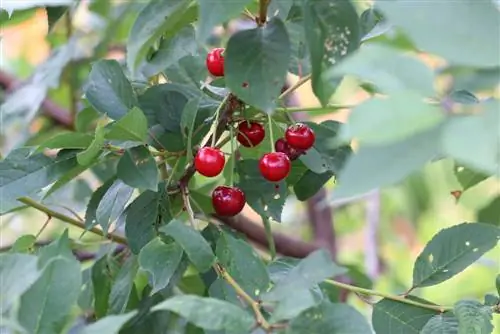
If the pests have already settled in the pulp, you should prevent the infestation for the following years by harvesting early. This will prevent the next generation from crawling into the ground and overwintering there.
Catch tarpaulin
Put a tarp under the tree to make it easier to pick up the fallen sweet cherries. Leave the tarpaulin for a long time. This must fit tightly, especially at the base of the trunk. Tape these down with tape to prevent the maggots from migrating. As an alternative to the tarpaulin, a transparent garden fleece is also suitable so that the grass underneath gets enough light and doesn't die.
Removing fruit mummies and fallen fruit
Pick overripe sweet cherries that don't fall to the ground themselves. The larvae can abseil themselves from the fruit to the ground using a self-spun thread. Fallen fruit should be buried together fairly and at least 20 centimeters deep in the ground so that the larvae cannot pupate. Disposal in the compost is not recommended.
Mulching
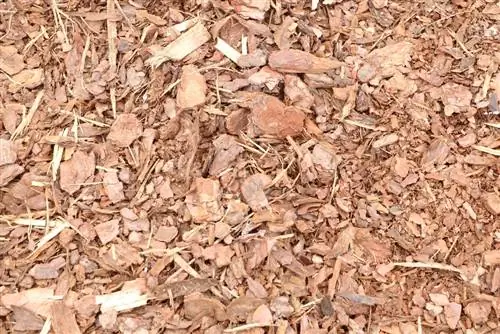
Cover the ground around the trunk with mulch in spring. This delays the heating of the substrate, which also causes the development of the pupae to stall. The flies hatch later and find no suitable nesting places when the cherries have already turned red. You can achieve a similar effect if you do not mow the lawn under the tree until the cherry harvest.
Yellow boards
From mid-May, when the fruits are still green, you can hang yellow panels coated with glue in the tree. The color attracts flying cherry fruit flies because they mistake the bar for a ripening fruit. Yellow panels are often provided with certain attractants that are intended to attract insects. When attempting to land, they stick to the surface.
Note:
This measure is not intended to combat or is not a real cherry fruit fly trap, but it does provide good information about the population density of the insects. This way you can check the spread of pests every year.
Culture protection networks
This method is very effective and is used in organic fruit growing. However, it is only recommended for smaller trees, as spanning large trees is no longer practical. Here it can help to net individual branches or cut the tree back before spanning it.
Planting early ripening cherry varieties
If you don't have a cherry tree yet but are thinking about buying one, you should choose early-ripening varieties. These trees reach fruit ripening before the cherry fruit flies mate. They cannot find suitable egg-laying places, so the population automatically reduces.
Encourage natural enemies
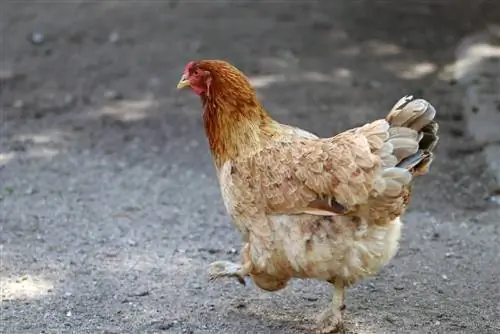
Design your garden as close to nature as possible. In diversely structured habitats with dead wood, piles of stones and strips of flowers, various birds and insects find vital retreats and sources of food.
- Swifts and swallows: hunt flying insects
- Ground beetles, spiders and parasitic wasps: larvae eat cherry fruit fly maggots
- Chickens and ducks: eat pupae from the ground
No danger when consumed
You don't have to worry if you eat cherries with maggots. The larvae are tasteless and completely harmless to he alth. You will not notice by tasting whether a fruit is infected or not. Since the very idea causes repulsive feelings in many people, you can play it safe and deworm the fruits:
- Pour cold water over the fruit in a deep bowl
- Let stand for about 30 minutes
- Fruits swell and maggots crawl out
- drain through a sieve
- repeat several times if necessary
Tip:
You can also deworm the fruits by hand by cutting them open and scraping out the maggots with a knife. However, this method is significantly more labor-intensive.

